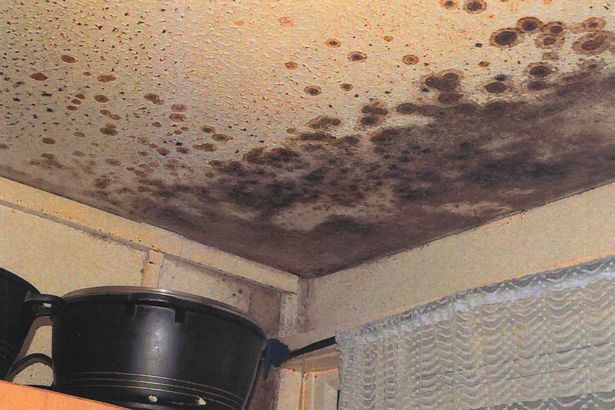
“Notable” damp and mould has been found in thousands of council properties, prompting a watchdog to urge landlords to “act now.”
The Regulator of Social Housing’s (RSH) initial findings in its investigation into conditions in the sector come after the death of two-year-old Awaab Ishak, who was exposed to mould in a housing association flat.
The toddler died in December 2020 from a respiratory condition caused by mould at his home in Rochdale, Greater Manchester.
His parents, Faisal Abdullah and Aisha Amin, repeatedly complained about the mould.

Following a coroner’s report last year, the RSH asked providers of social housing to submit evidence about the extent of damp and mould in tenants’ homes and their approach to tackling it.
The regulator, which published its findings on Thursday, estimated that less than 0.2 per cent of social homes in England have the most serious damp and mould problems – which equates to around 8,000 homes.
These would fail the Decent Homes Standard, the regulator said.
It added that more such cases were reported among local authorities than private providers. The regulator said: “These are not acceptable conditions for tenants to be living in, even if the proportions are relatively small.
“Local authorities reported proportionately more cases than private registered providers.”
The RSH said providers had recorded and submitted information about the number of damp and mould cases they had in a variety of ways, meaning it was difficult to accurately assess the extent of such problems in the sector overall.
The estimates are based on the four million homes that are owned and managed by large registered providers – those with more than 1,000 homes.
It said that between 1-2 per cent of social homes (40,000 to 80,000) are estimated to have serious damp and mould problems, and a further 3-4 per cent(120,000 to 160,000) to have notable damp and mould.

Fiona MacGregor, chief executive of RSH, said: “Tenants deserve quality services and homes that are safe and of a decent standard.
“Where there are issues, landlords need to act now to put things right, before we start our active consumer regulation including inspections of providers.
“We expect all providers to continue to look at how they can improve the way they identify and address damp and mould.”
The regulator said that while its findings showed that the vast majority of people living in social housing have homes that are “largely free from damp and mould”, those that do have such issues are at risk from a serious impact on their health and wellbeing.
It added: “It is essential that providers identify and address these issues promptly and effectively.”
The RSH said changes to legislation will enable more “active regulation of the quality of homes and services” and vowed to look in more detail at how individual landlords are performing.
In a warning to providers, the regulator said: “We expect providers to be asking themselves how they can improve – regulation should not be the only driver for change.”
Providers that reported a high prevalence of serious damp and mould or supplied poor quality information will be asked by the regulator to give “further, specific assurance that they are identifying and addressing damp and mould cases”.
In cases where providers are identified as not meeting standards, the RSH said regulatory action will be taken, including publishing regulatory notices or regulatory judgments “where appropriate”.

Last year, the RSH found “widespread failings” at the housing association that owned the flat Awaab had lived in.
Rochdale Boroughwide Housing (RBH) made “incorrect assumptions” about the cause of damp and mould in the toddler’s flat and did not treat his family with fairness and respect, the regulator said.
At the time RBH said it was working closely with the regulator to address the concerns, acknowledging there is a “long road ahead” to regain trust and confidence.
Local Government Association (LGA) housing spokesperson Darren Rodwell said councils are “determined to improve housing conditions for all social and private tenants”.
He said: “The LGA continues to work with professional bodies, as well as the Government, to discuss possible solutions on improving housing standards – including those relating to damp and mould in tenanted properties.”







